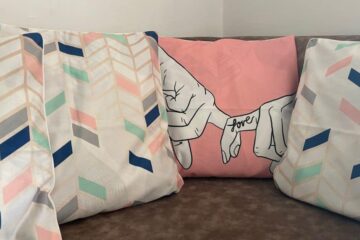Gabbeh rugs embody the spirit of improvisation, and weavers infuse each piece with their unique creativity. They are one-of-a-kind creations that reflect the weaver’s interests and surroundings.
Thoughtfully styling a Gabbeh rug can showcase its beauty and meaning.
The Ultimate Guide to Caring for Your Gabbeh Rug
Vacuum Regularly
Gabbehs are easy to care for and work well with various decorating styles. They look especially good with interior décor incorporating natural features, such as woven baskets and indoor plants. They also look gorgeous with furniture crafted from wood, especially when it is finished in natural tones.
Because they are woven by hand, Gabbehs tend to be one-of-a-kind works of art based on the weaver’s expression. Usually, they have striking colors and designs that evoke a mood or scene. They can also feature subtler, modern color field designs reminiscent of Rothko.
Premium hand-spun wool dyed with natural vegetable colors is used to make gabbehs. Their high lanolin content repels moisture, making them resistant to stains. However, it is important to vacuum regularly to remove dirt and debris. For deeper cleaning, use a rug shampoo or a gentle brush attachment. Be sure to blot spills immediately rather than rubbing them, as this can cause wool fiber damage.
Blot Spills Immediately
Featuring a wide variety of warm, earthy colors and intricate patterns, Gabbeh rugs make for gorgeous focal points in any room. They are versatile enough to fit into traditional or modern settings, and their low pile height makes them perfect for hardwood floors.
When you notice a spill or spot on your rug, it is essential to react quickly. If possible, use a dry cloth to blot the area of the spill or stain. Do not rub the stain, as this will only spread the liquid further into your rug’s fibers and possibly lead to color or fiber damage.
Woven initially for functional purposes, many Gabbeh rugs depict elements of the nomadic lifestyle and culture in their motifs. This defines these rugs and elevates them from utilitarian pieces to artistic expressions of the weavers’ unique creativity. These rugs commonly use symbols of people, animals, flora, geometric shapes, and more.
Avoid Heavy Furniture
Gabbeh rugs are woven from high-quality wool and dyed with natural vegetable oils, resulting in rich colors that stand up to regular use. This means you can enjoy these artisanal works for years to come, providing your family with a warm and welcoming living space that’s truly special.
These rugs are often adorned with bold patterns that combine shapes and colors. While they aren’t as intricate as other Persian rugs, they still embody the spirited culture of their nomadic tribe members.
The inherent irregularities of these rugs pair well with decor that showcases a rugged farmhouse style, such as woven baskets, wooden furniture, and textured throw blankets. Their natural hues work beautifully with organic elements like indoor plants and bare wood floors. However, you should avoid placing a Gabbeh rug underneath large furniture to prevent the rug from becoming damaged over time. Rotating your rug occasionally and having it professionally cleaned every few years will help to protect it from uneven fade and over-wear.
Let the Rug Shine
Gabbeh rugs represent a rich culture, history, and artisan techniques. Authentic tribal Persian rugs, like this brown Gabbeh rug, are prized as more than mere floor coverings and can tell a story of traditions and values in a way that commercially made rugs can’t.
This unique type of handmade rug thrives in spaces that incorporate natural elements. Wooden furniture, woven baskets, and raw metals pair well with the earthy tones of Gabbeh rugs to foster a warm ambiance in the home.
These wool rugs are known for their thick, plush pile and warm color palette that draws inspiration from natural dyes. These rugs work beautifully with any farmhouse decor style and make an excellent focal point in the living room or foyer. For the best effect, layer Gabbeh rugs with jute or sisal to create a textured base that elevates the space’s aesthetic. This will help highlight this beautiful handmade rug’s intricate details and patterns.








